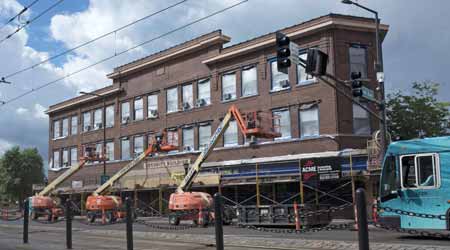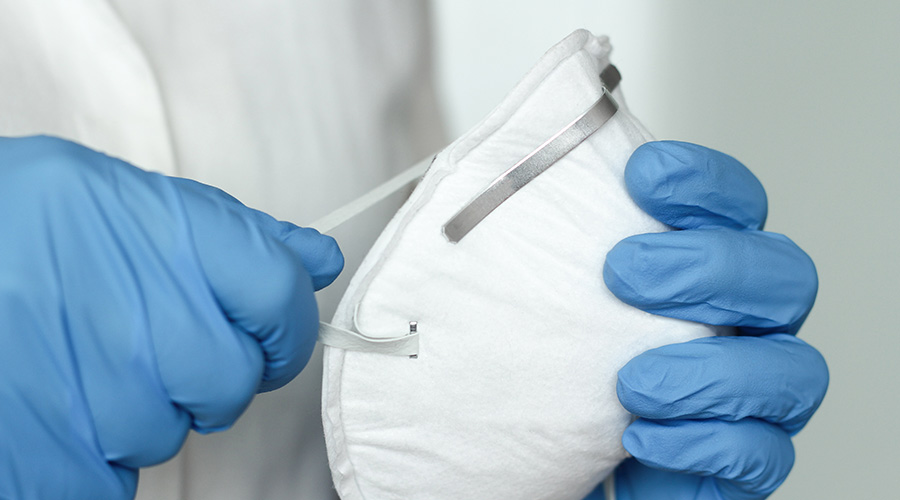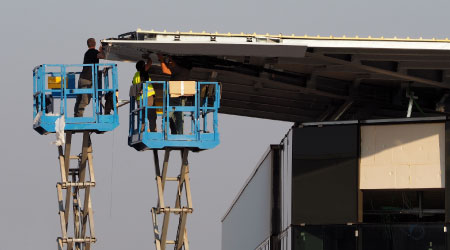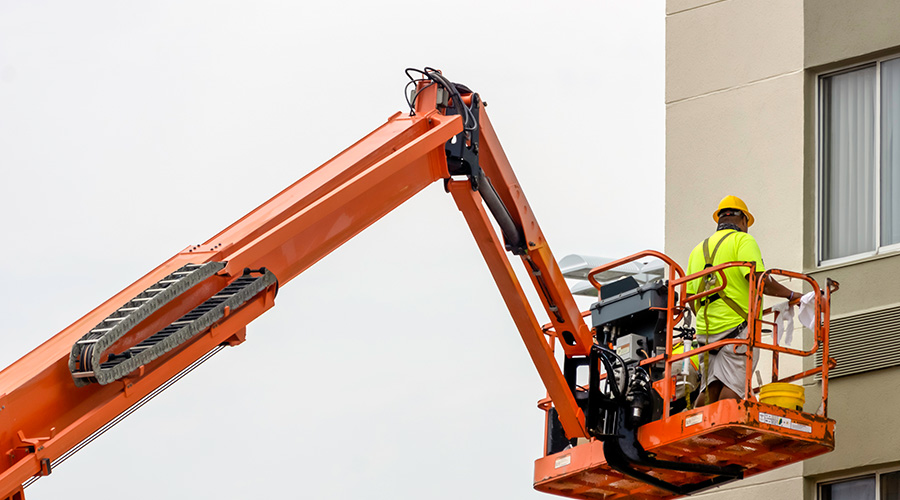 Exterior facades, along with gym and auditorium ceilings, are among the most common applications for mobile elevating work platforms.
Exterior facades, along with gym and auditorium ceilings, are among the most common applications for mobile elevating work platforms.MEWPs: New Name, Renewed Focus on Safety
A new generation of mobile elevating work platforms gives technicians greater access to facilities’ hard-to-reach areas
ANSI Standards A92 have been upgraded to provide better and safer operation and maintenance of mobile elevating work platforms (MEWP), which is the new designation that supersedes the aerial work platform (AWP) designation.
The standards provide criteria for vehicle-mounted rotating and elevating work platforms, elevating aerial platforms, boom-supported elevated aerial platforms, and equipment related to the aerial platform and access industry. They cover design, safe use, risk assessment, and rescue planning, and they are effective guides for a training program. When hiring contract lift services, the hiring agent must require certification that lift operation and maintenance technicians have been provided the appropriate training and meet the requirements of the new standards.
About 100 lift-related deaths and 20,000 lift-related injuries occur annually, according to the U.S. Bureau of Labor Statistics. In the MEWP category, the U.S. Occupational Safety and Health Administration (OSHA) includes extendable boom platforms, aerial ladders, articulating or jointed boom platforms, and non-rotating scissor lifts and vertical boom lifts.
The primary job hazards associated with MEWPs according to OSHA include: falls, objects falling on workers; tipovers; ejections due to sudden jolts; collapses from the failure of components; overloading; mechanical failure; collisions with objects on the ground; and contacts with the ceiling or overhead objects.
Training on hazard avoidance for MEWPs should provide the following: an explanation of electric, fall, and falling-object hazards; procedures for dealing with these and other hazards; ways to recognize and avoid unsafe site and equipment conditions; and correct operation that includes maximum intended speed, as well as load and load capacity under varying site terrain and wind conditions, not necessarily the same as maximum. The training must include demonstration of skills specific to each lift before operating, when and how to do pre- and post-inspections, and manufacturer requirements based on industry standards.
Retraining at key times is just as important as initial training to keep operators and maintenance technicians safe and up to date. Examples of these key times include:
• A new or different lift now features advanced controls.
• An accident occurs. For example, a lift strikes a pedestrian. In this case, compile an after-accident report, identify remedies, and communicate it to all the operators to prevent repetition. Technicians can avoid a recurrence by marking the danger zone with warning signs and floor tape and by ensuring that blue and red lights and backup alarms highlight activity in the area.
• A new hazard is discovered. Worksites are under constant change as projects progress. When the location of the new hazard is identified, training should cover avoidance practices before any operator gets into such a situation. Also, a safe area might be more dangerous at night.
• More than a few weeks have elapsed since an operator used a lift. Operators need refresher training. Demos and videos, as well as hands-on practice, give operators more confidence to make better choices, even if they have operated this equipment before.
One final and important part of the training is calibration training to ensure controls are operating accurately. For example, if the control that clamps on the frame by means of a magnet indicates that the loaded forks are level, are they really level? To what tolerance? This can be critical in preventing loads from bumping into objects or sliding off forks. New field calibration methods are available, so this calibration can be done in the field with proper training.
— Thomas A. Westerkamp
Related Topics:















